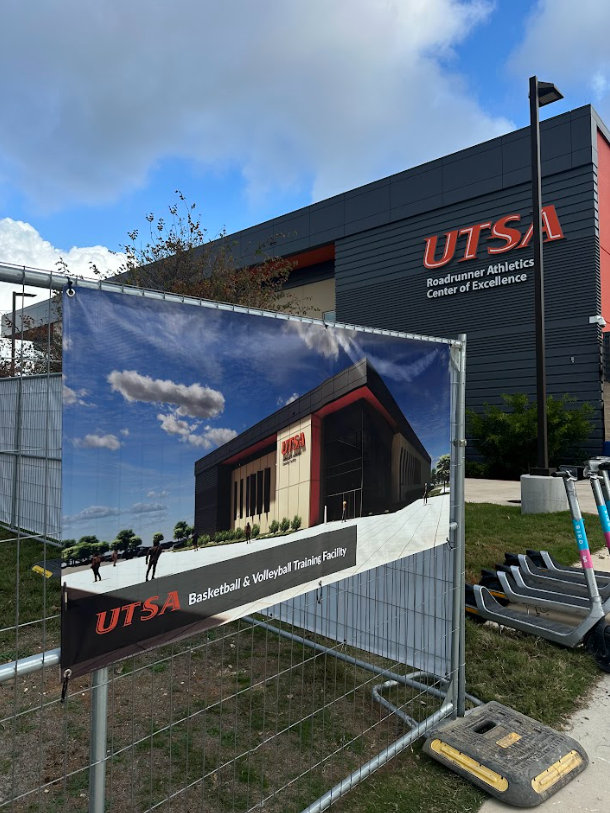

Robert Pistocchi, The Paisano
Last week, the UTSA Center for Urban and Regional Planning Research hosted the second in a series of lectures, Dialogues in Planning, which focused on transit-oriented development in North Texas. Gary Thomas, the president and executive director of Dallas Area Rapid Transit (DART) gave a lecture and panel discussion entitled “Transforming North Texas Growth One Train at a Time.”
The lecture provided a brief background on DART and its mission, chronicling various successes that the company has achieved throughout Thomas’s career with the company. Held at UTSA’s downtown campus, the lecture also provided insight into the different approaches and histories Dallas and San Antonio have had regarding public transportation.
Founded in 1983, when the city of Dallas decided to create a single transit authority, DART has since grown into a company that boasts the longest light rail system in America, with a 13-city service area.
Unlike in San Antonio, the Dallas-Fort Worth area has a huge variety of public transportation options through DART besides their light rail, including commuter trains, buses, vanpools and paratransit services. Thomas noted that this diverse range of choices is one of DART’s biggest successes, and contributes to whether or not citizens ultimately choose to use public transportation.
DART’s hub-and-spoke rail system certainly provides an efficient, inexpensive choice for Dallas’ college students, as it connects to the University of Dallas and North Lake College, a two-year community college just outside of Dallas proper. By 2016, UNT Dallas will have access to the railway, at which point every University of North Texas campus will be connected by one continuous rail system, from Denton to Fort Worth.
San Antonio voters are not unfamiliar with light rail proposals. In 2000, San Antonionians voted down a light rail proposal that would have connected UTSA’s Main campus to downtown, the Medical Center, the AT&T Center and many other San Antonio landmarks. And, just a few months ago, a proposed streetcar system that would have linked UTSA’s downtown campus with the Pearl District, Hemisphere Park and the Alamo City’s central business core was put on hold due to a lack of public support.
Students in Dallas also have an easier time navigating the city’s bus routes than do UTSA students. Students at most institutions within DART’s service range can also get free or reduced-fare semester passes that allow unlimited rides on all DART systems, as the corporation partners with many area schools. While VIA offers a similar program for San Antonio area students, there are a few key differences that make the public transportation in San Antonio much less appealing than in Dallas. Free semester passes are available for all Alamo Community College students, but UTSA students must get the standard $35 pass, available at Roadrunner Express or at the UC information desk.
Additionally, there is only one practical option for public transportation in the city—the bus. And though VIA’s 93 and 94 routes offer direct service between UTSA’s main and downtown campuses, commuter students may be less than thrilled with routes from their homes to the campus.
Taking a VIA bus is by no means unsafe; it is simply time-consuming. A trip from UTSA’s main campus to the neighborhoods near the intersection of Babcock and Prue—just three miles away and under ten minutes by car—takes roughly an hour on the VIA system. The 100 Primo route runs from UTSA through the Medical Center and all the way to one of VIA’s newest stations near Sunset Station, though that trip also takes an hour or longer, not including the significant wait time at the Medical Center Transit Center. More often than not, the buses will arrive late, and some walking will almost definitely be involved in any trip. When trying to arrive on time for class, these are all major problems.
The university’s packed parking lots provide more than enough proof that most students see their own cars as a much more viable option than the bus, and the university itself intends to cater to the heavy demand for parking. UTSA’s Master Plan, a blueprint for the university’s growth and progress, suggests that surface parking will be replaced with structured parking (garages, etc.) and parallel street parking in order to address “long-term growth needs and to create more public open space in the Central Campus.”
During the panel discussion at the end of the lecture, Thomas and two of his contemporaries in the transit industry raised hopes that San Antonians will become more receptive to instituting different methods of public transportation, such as the streetcar project proposed last year.
According to VIA’s Long Range Comprehensive Transit Plan, they too have vague hopes of creating their own light rail system, with one potential route stretching from UTSA to downtown along what is currently referred to as the Northwest Corridor, along existing bus lines. The new Westside Multimodal Transit Center — which has already broken ground just a few blocks from UTSA’s downtown campus — has been designated as a hub for these future plans, as well as a hub for possible commuter and passenger rails, and a terminus for the proposed streetcar.
Projections for San Antonio indicate that the city will grow by more than a million residents in the next 25 years. And, if recent history is any guide, District 8, where UTSA’s main campus is located, will continue to grow at twice the rate as the rest of the city.
Thomas suggested that San Antonians aren’t as receptive to alternative means of public transit as Dallas residents, namely because citizens of the Alamo City don’t understand what true traffic congestion feels like. If San Antonio continues to grow at projected rates — and if UTSA continues to become more integral to San Antonio’s collective infrastructure — future students can still hope for a more efficient way to get to class.






